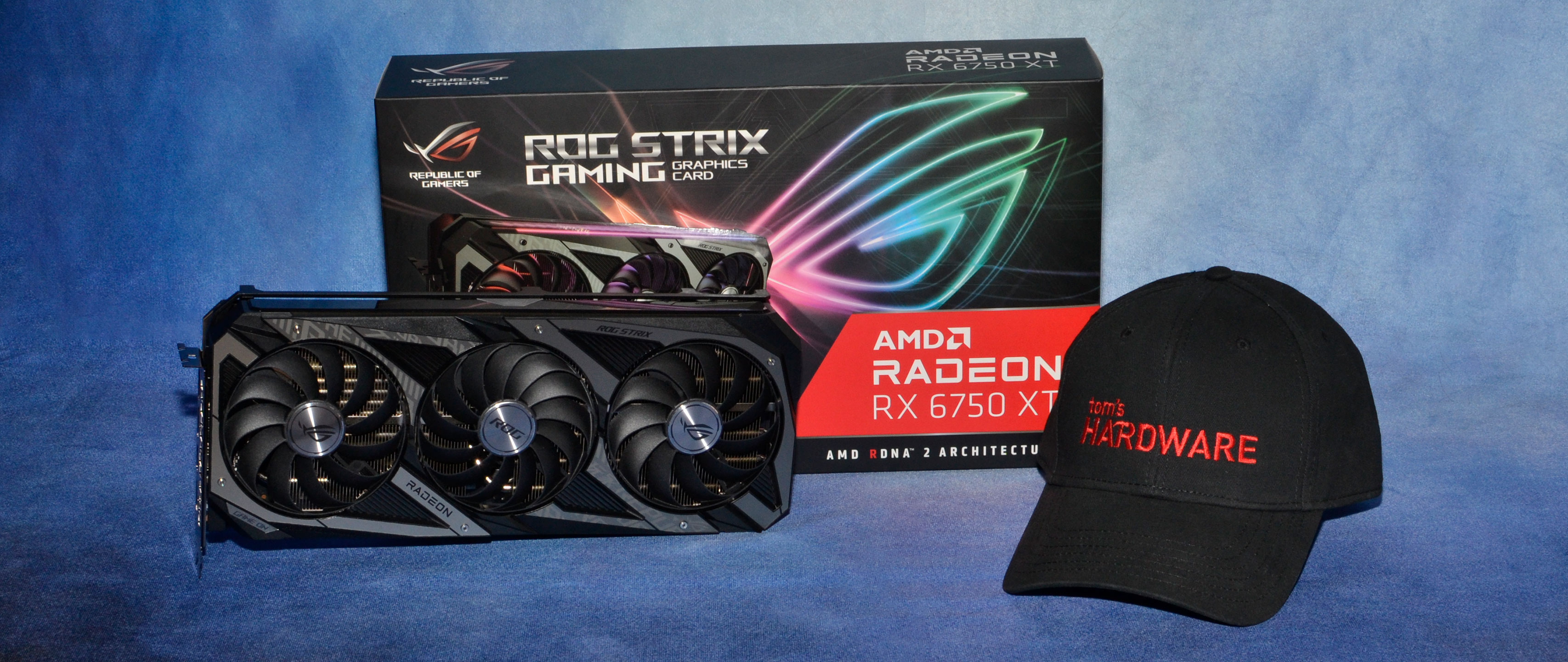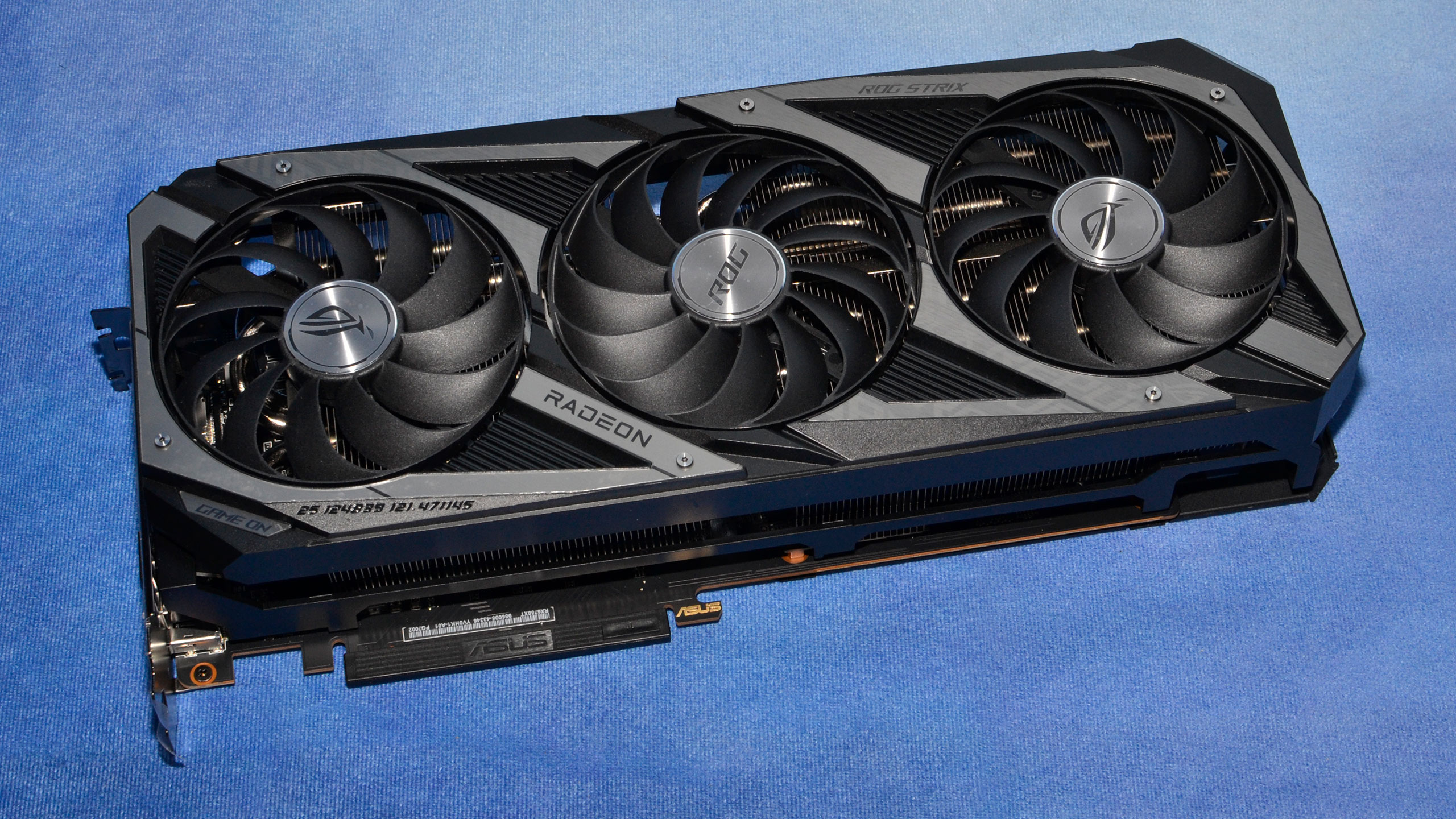Why you can trust Tom's Hardware
We use Powenetics testing hardware and software for our power, temperature, clock speed, and fan speed testing. We capture in-line GPU power consumption by collecting data while looping Metro Exodus at 1440p ultra as well as while running the FurMark stress test at 1600x900. Our power testing PC uses an open testbed, as that's required for all the extra wires and riser card, and it's the same old Core i9-9900K that we've used for the past several years.
We tested the Asus card in the three modes defined by Asus' GPU Tweak software: Gaming (default), OC, and Silent, with the latter two providing a 10% increase or decrease in power limits, along with a 20MHz increase/decrease in GPU clocks.
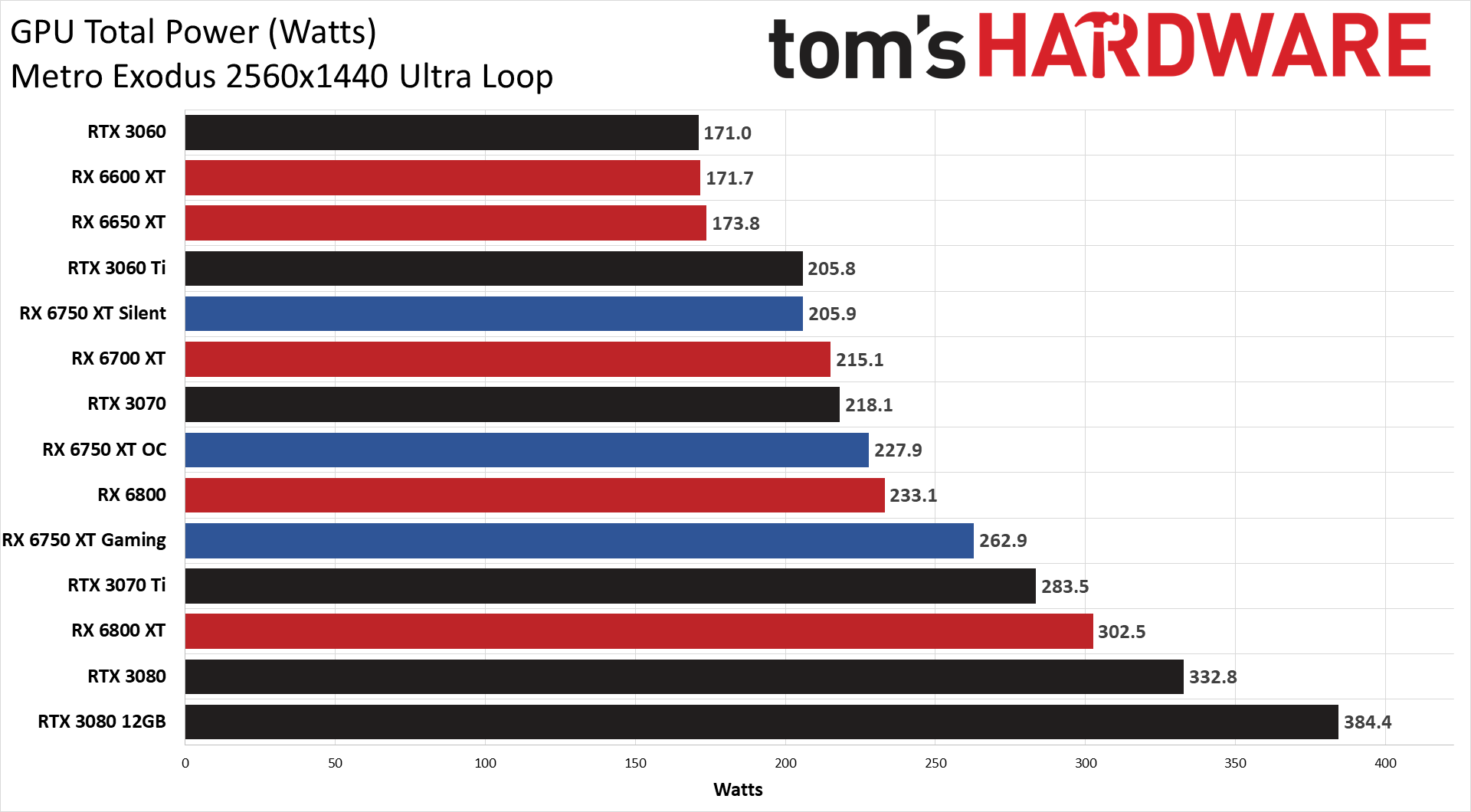
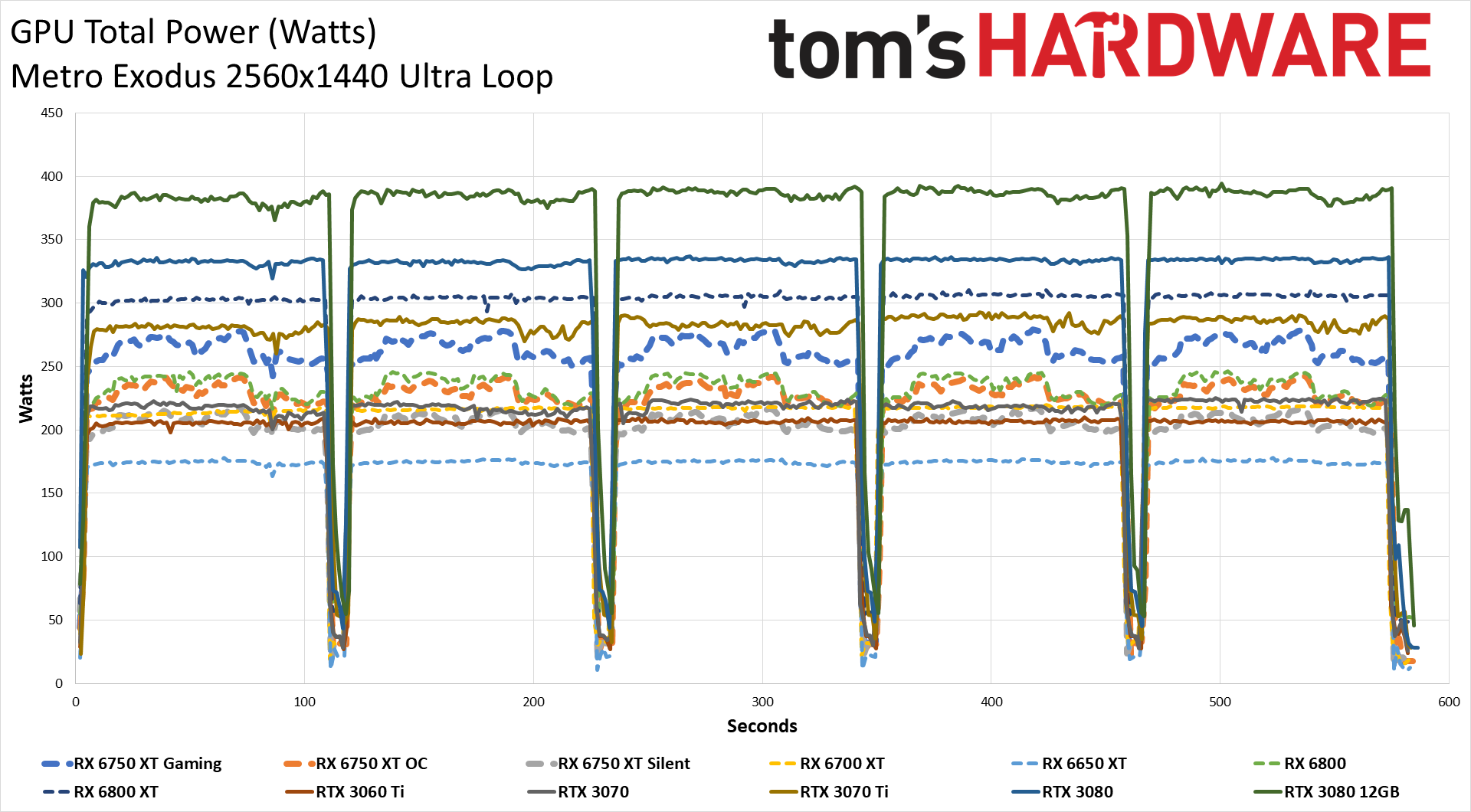
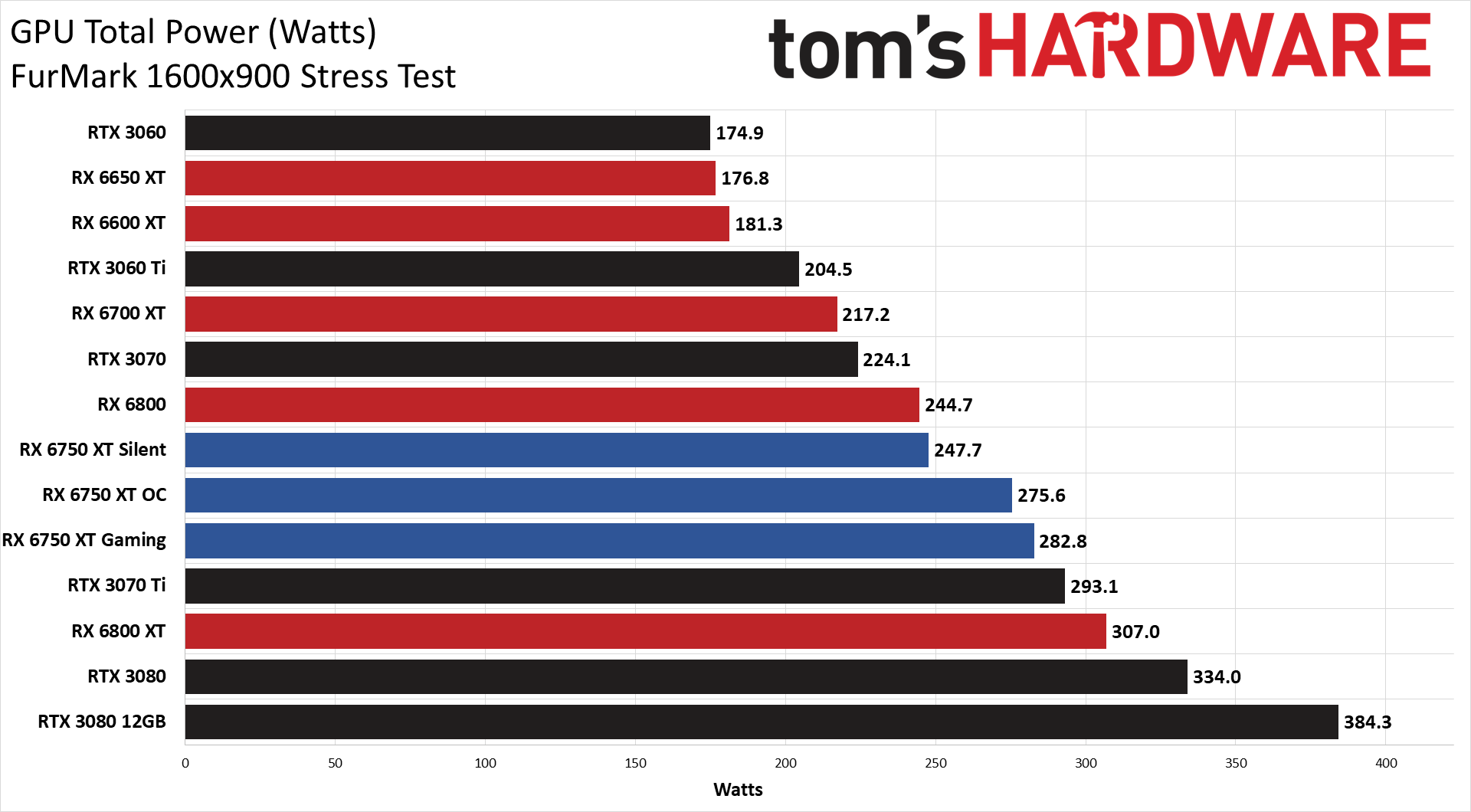
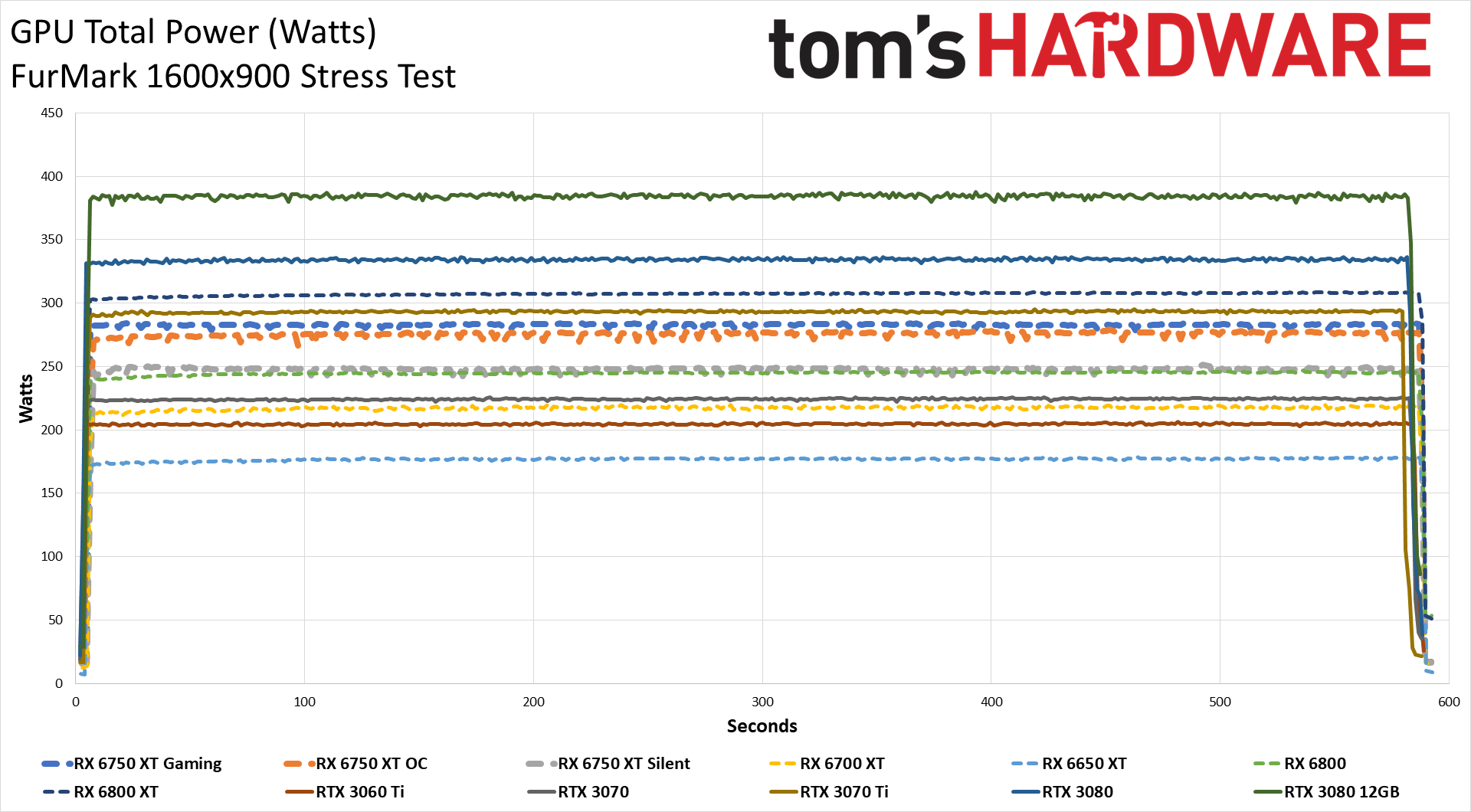
Interestingly, something is… off… with the GPU Tweak profiles. We actually confirmed this in some gaming tests, but the OC mode ended up using quite a bit less power than the default mode and also decreased performance by 1–2%. That's not supposed to happen, so something else apparently came into play, but this is actually good news. It means that anyone using the Asus RX 6750 XT will get optimal out-of-box performance without having to install any extra software.
One of the changes AMD made with the 6750 XT compared to the existing 6700 XT was a 20W increase in the power limit, but Asus pushed the limit even further. The 6750 reference design has a 250W power limit, compared to 230W on the reference 6700 XT. The Asus Strix card came in at 263W in our gaming test and hit 283W in FurMark. By comparison, the reference 6700 XT actually came in below the rated TBP at around 215W.
OC mode dropped the Asus card to 228W in Metro and 276W in FurMark, so it made a much bigger difference in gaming. The silent mode provided a bigger power decrease in FurMark, and actually got gaming power use below the RX 6700 XT. Of course, with the lower power limit, performance in Silent mode would be closer to the old 6700 XT, and the difference in noise levels was hardly noticeable (see below).
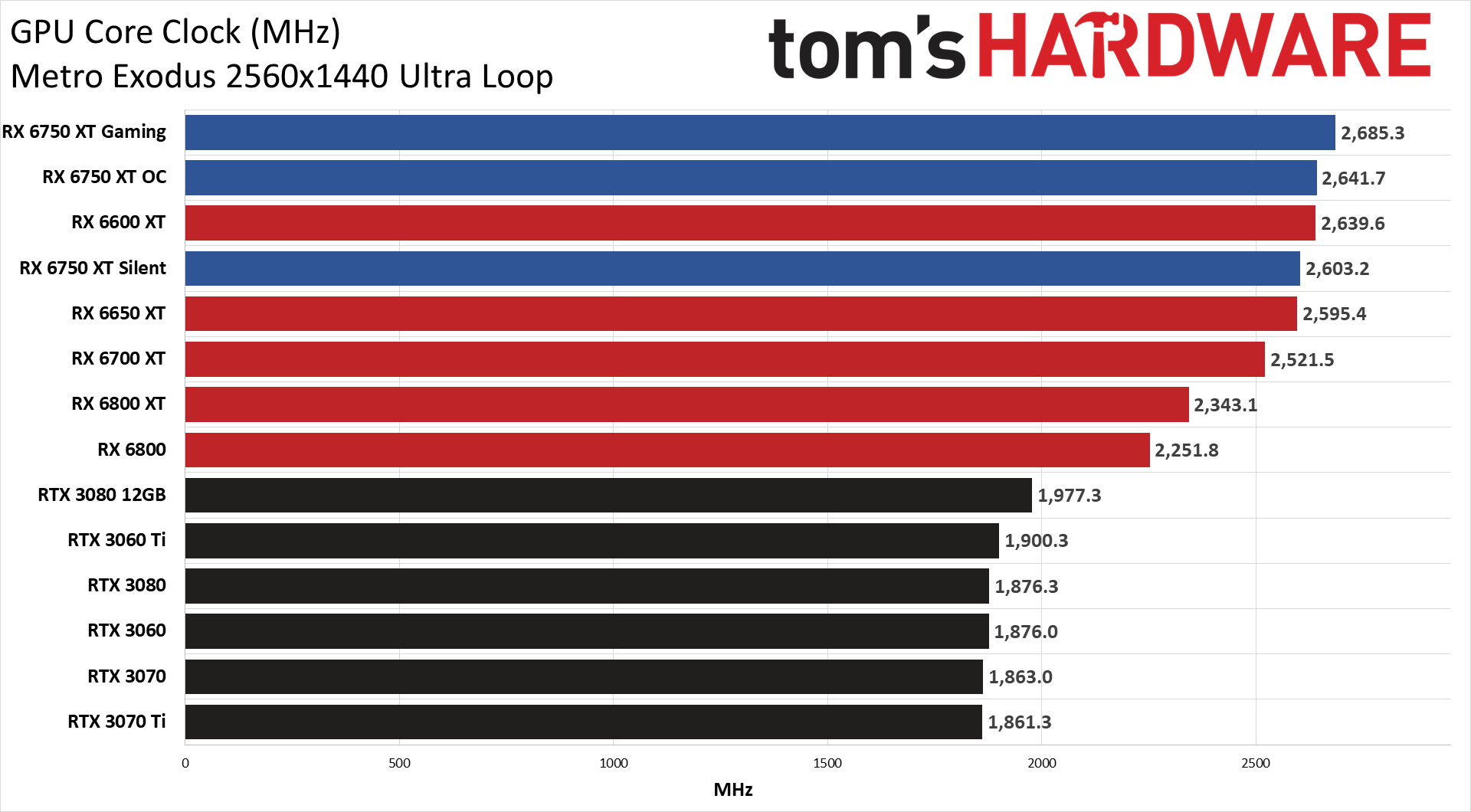
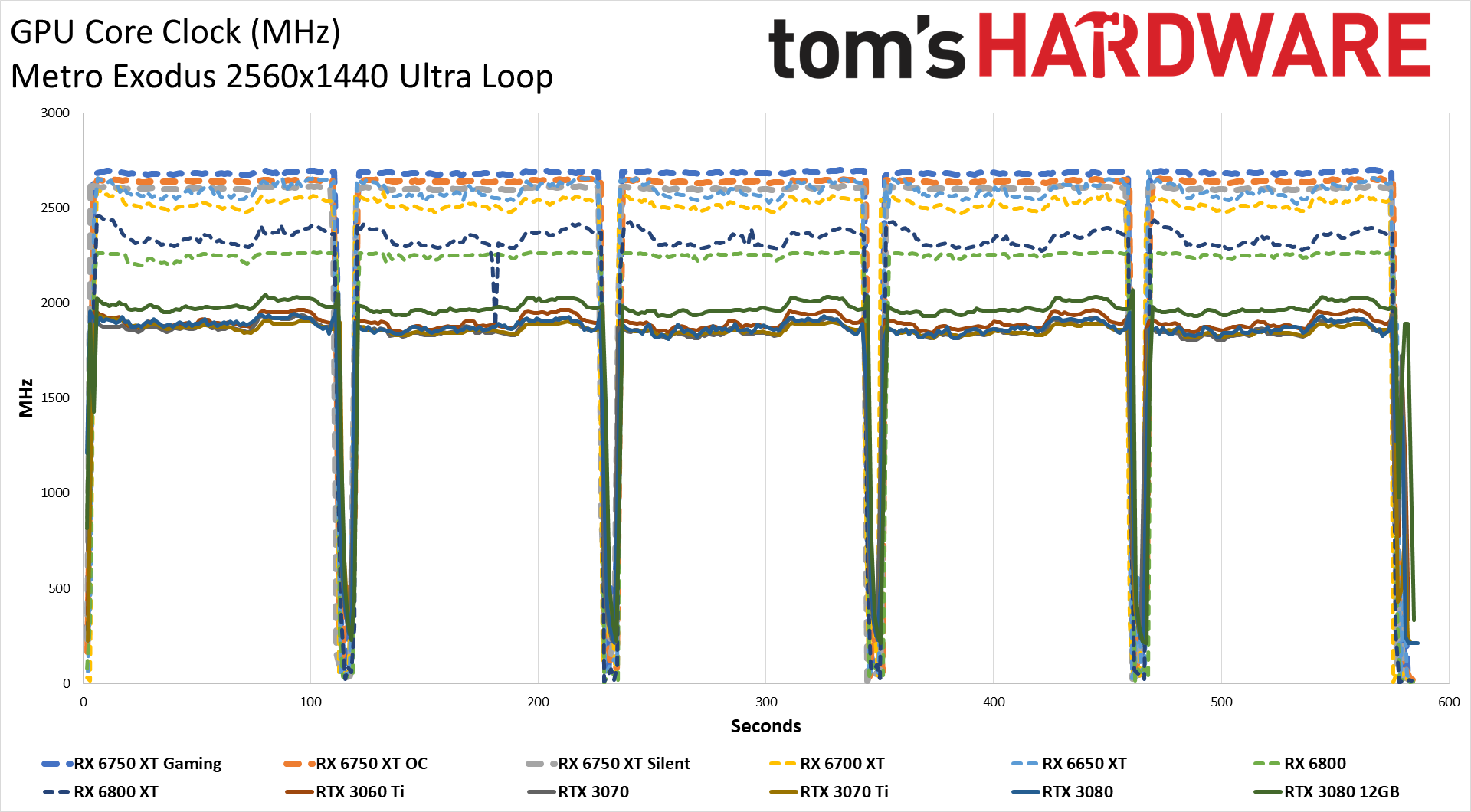
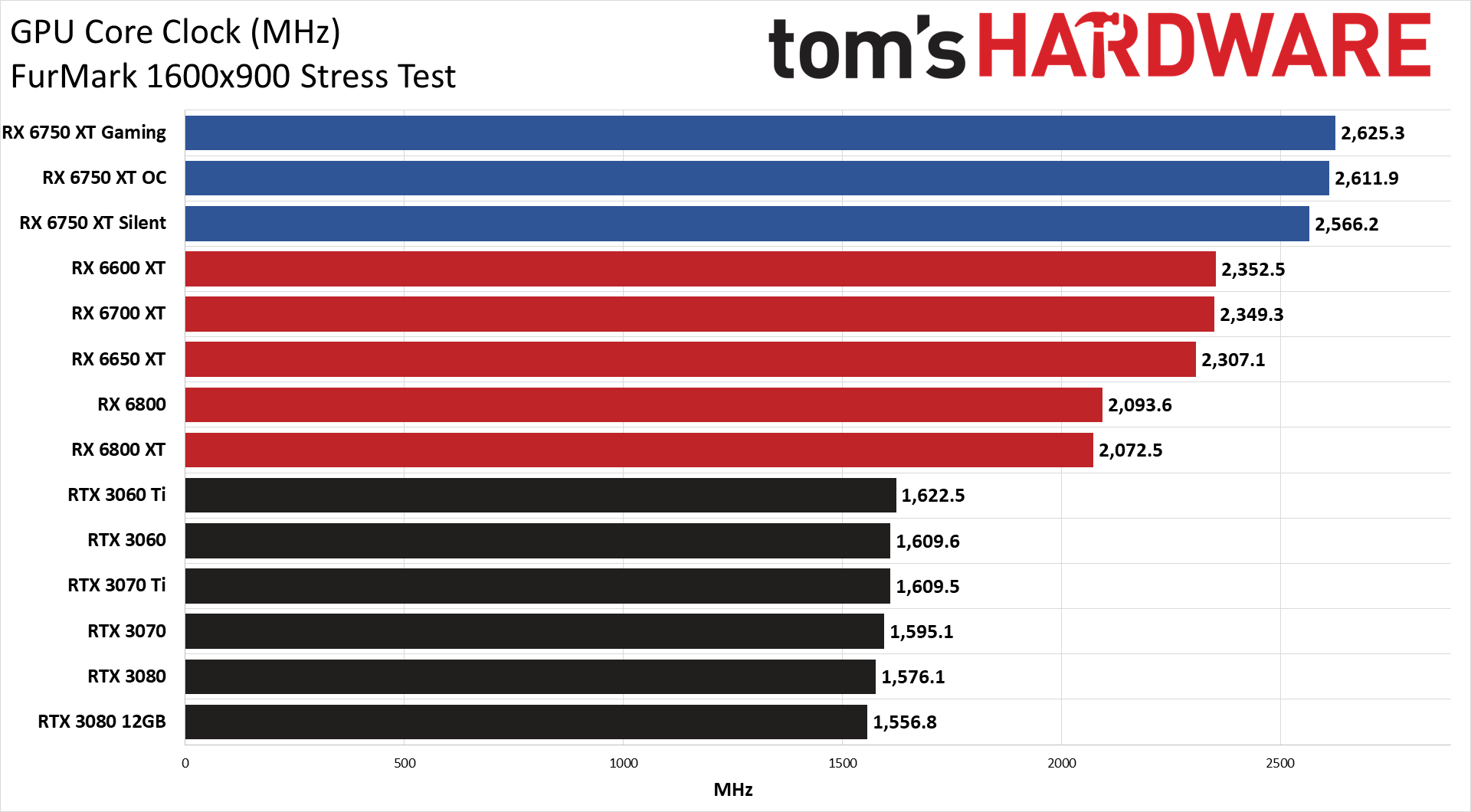
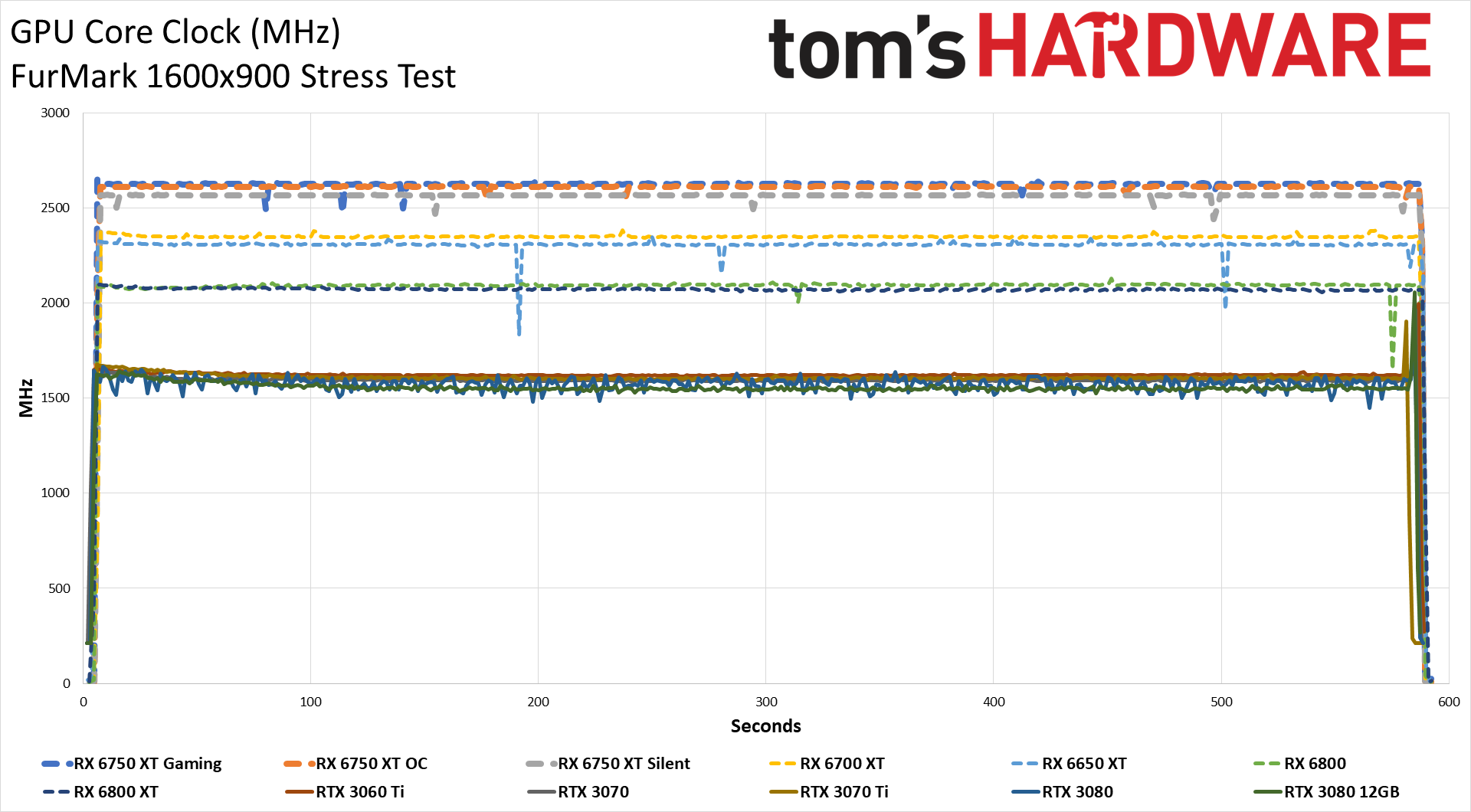
Clock speeds on the Asus 6750 XT were clustered pretty close together, regardless of which power mode was used. Even in Silent mode, the Asus card still averaged just over 2.6GHz, and it only dropped by around 40MHz in FurMark. On the other hand, the Gaming mode only improved average clocks by about 80MHz in gaming, or just 20MHz in FurMark.
Compared to the reference RX 6700 XT, the overclocked Asus 6750 XT provided about 160MHz higher GPU clocks, a 6.5% improvement that tracks pretty much directly with the increased frame rates that we measured. The GDDR6 memory meanwhile provided a theoretical 12.5% boost to bandwidth, but we didn't see any instances where performance increased by more than 10%. It's possible memory subtimings are also worse with the higher clocked memory, which could limit the potential gains.
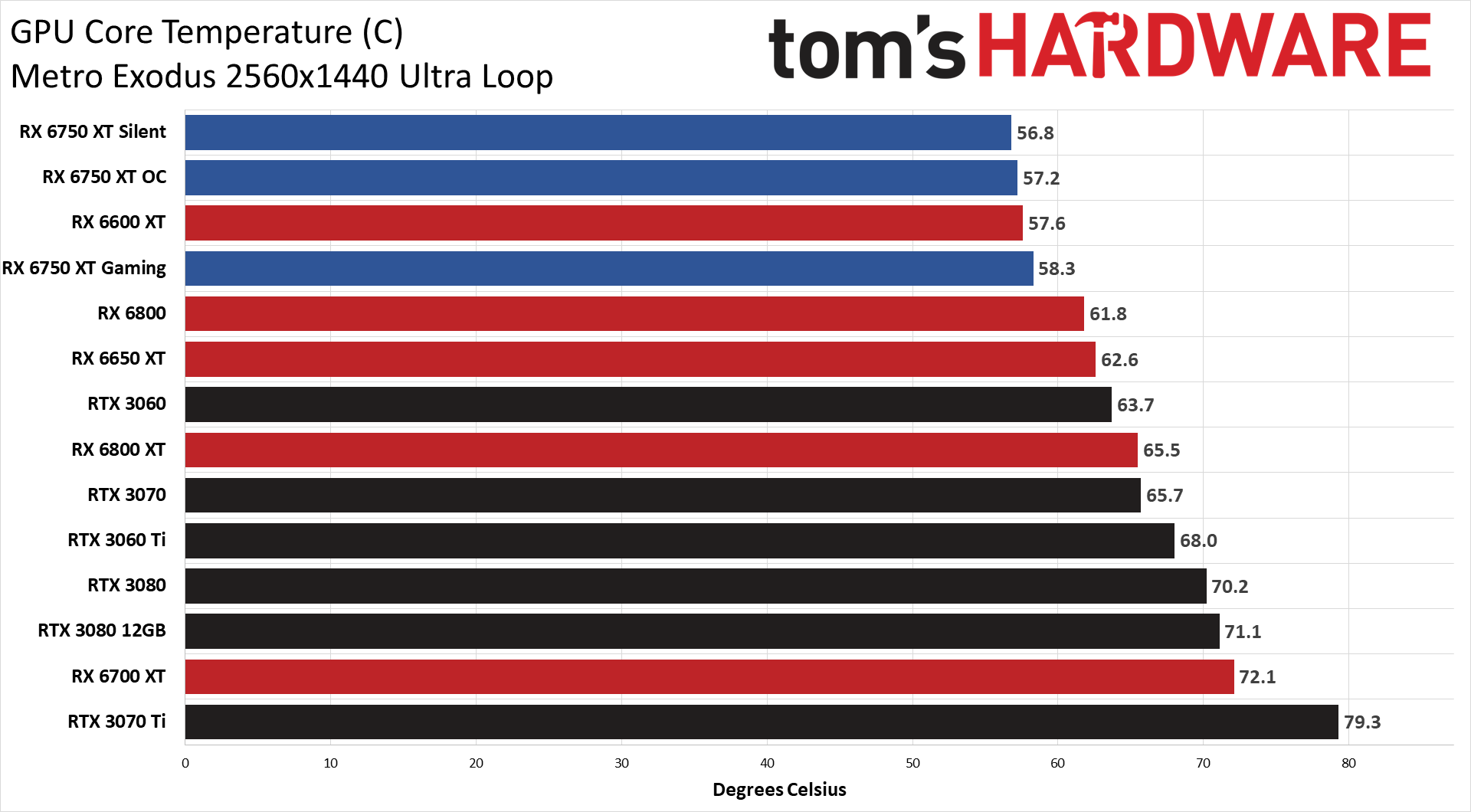
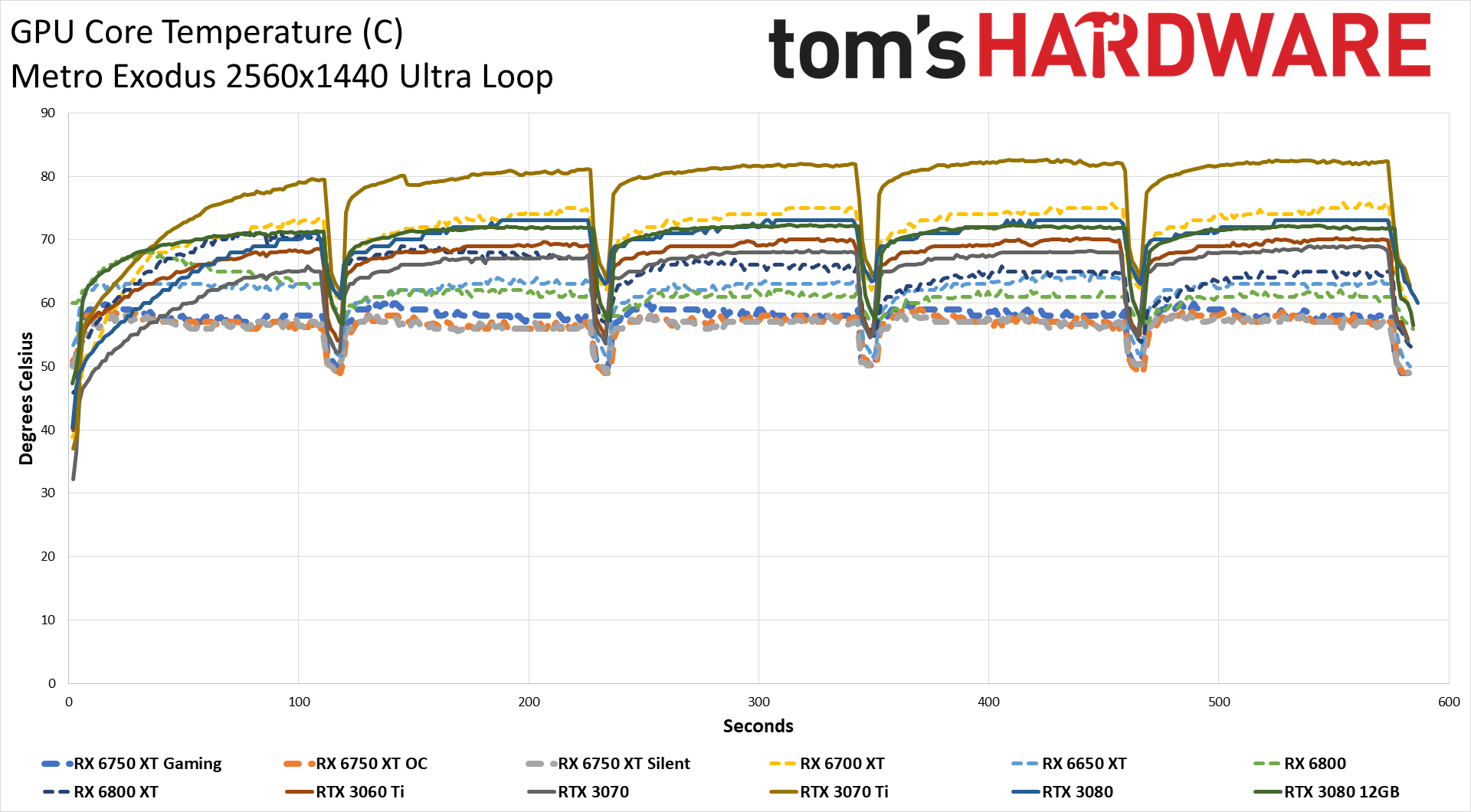
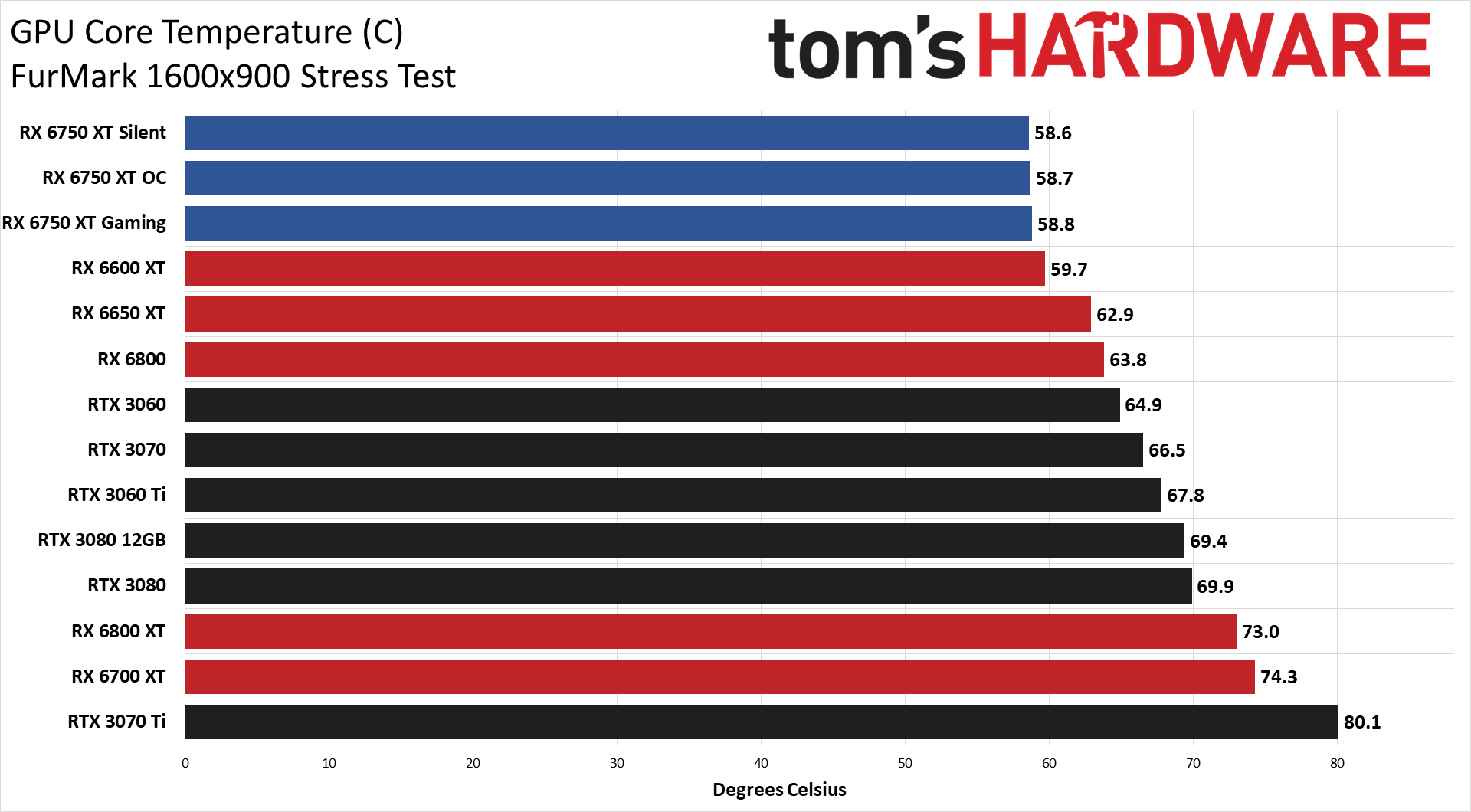
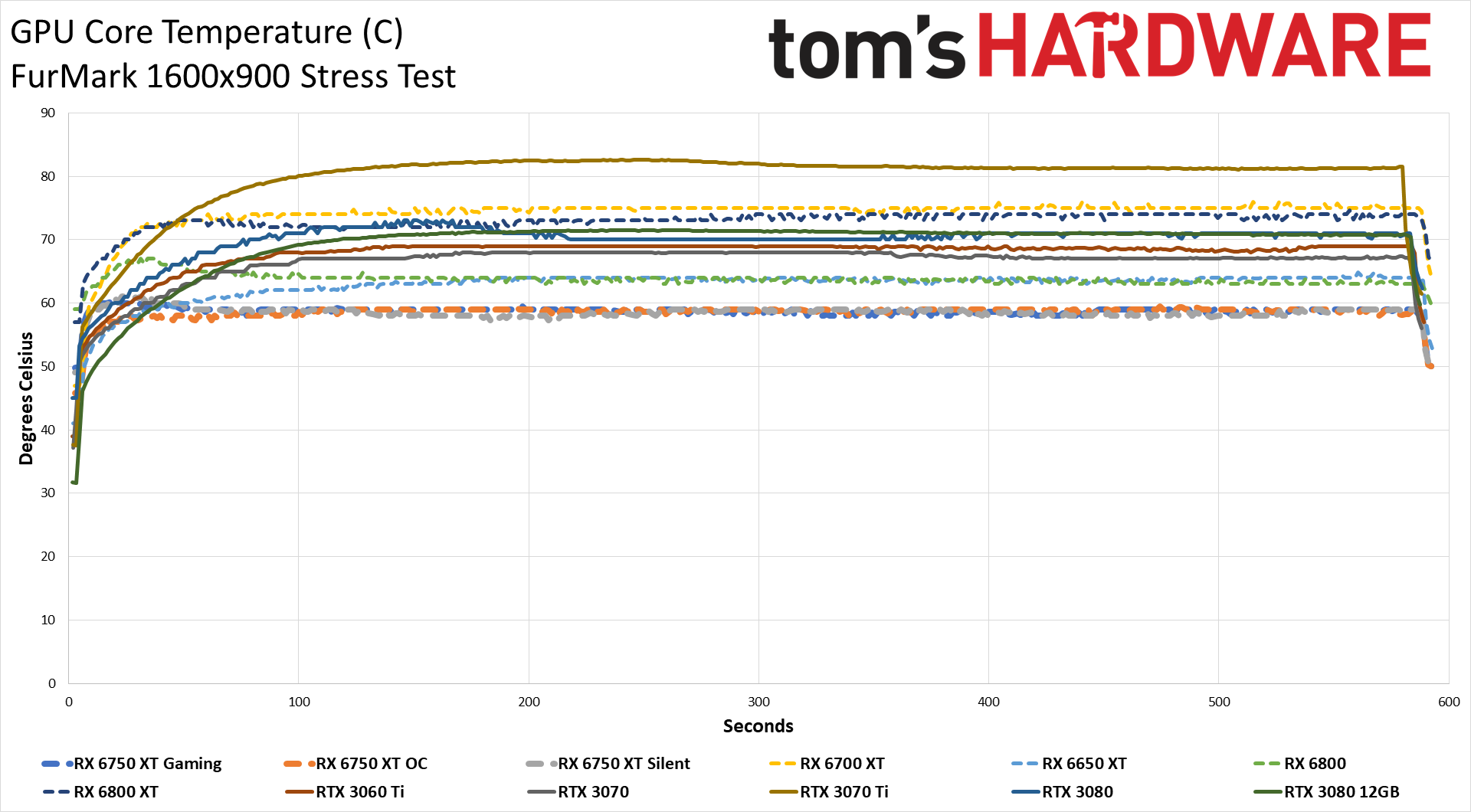
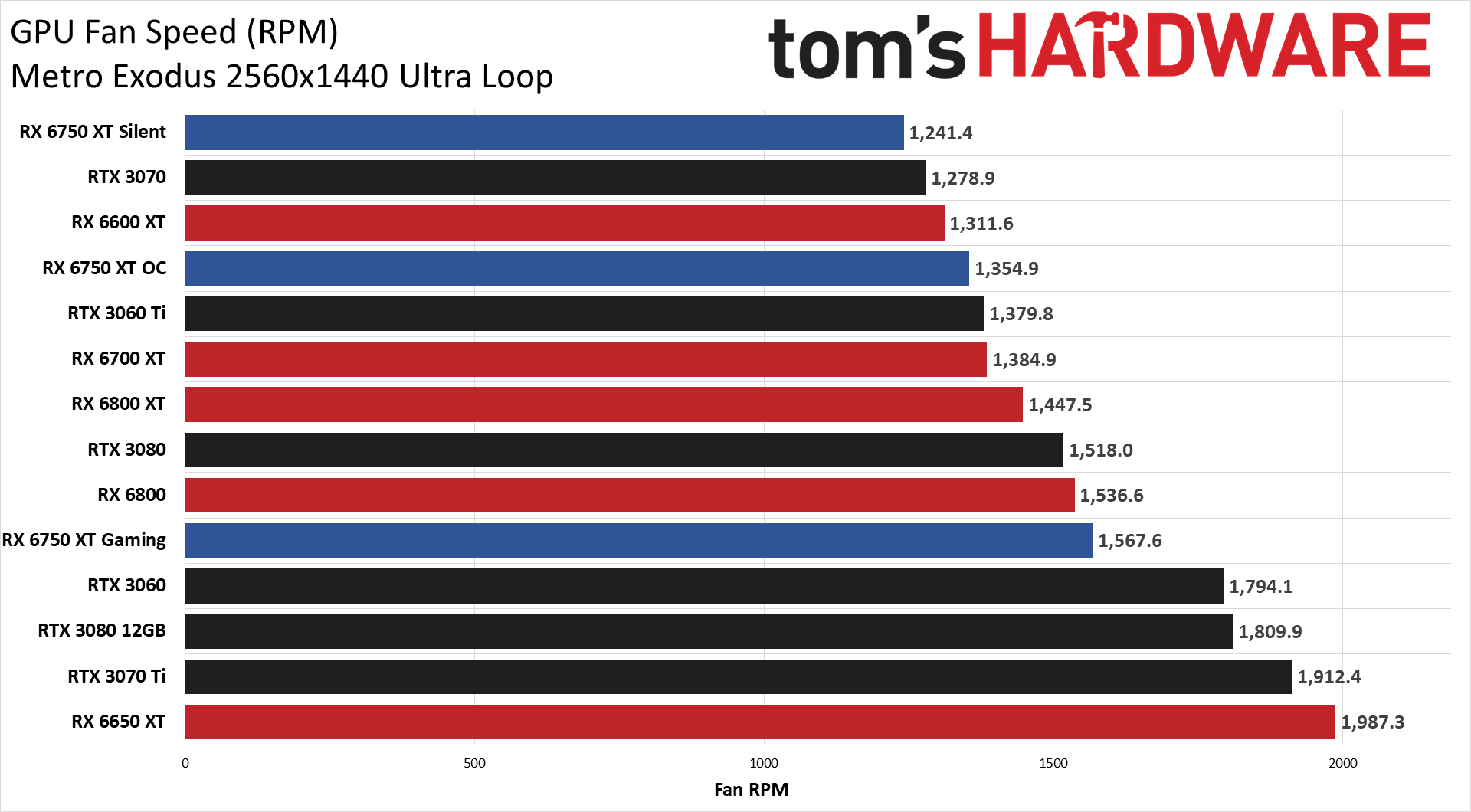

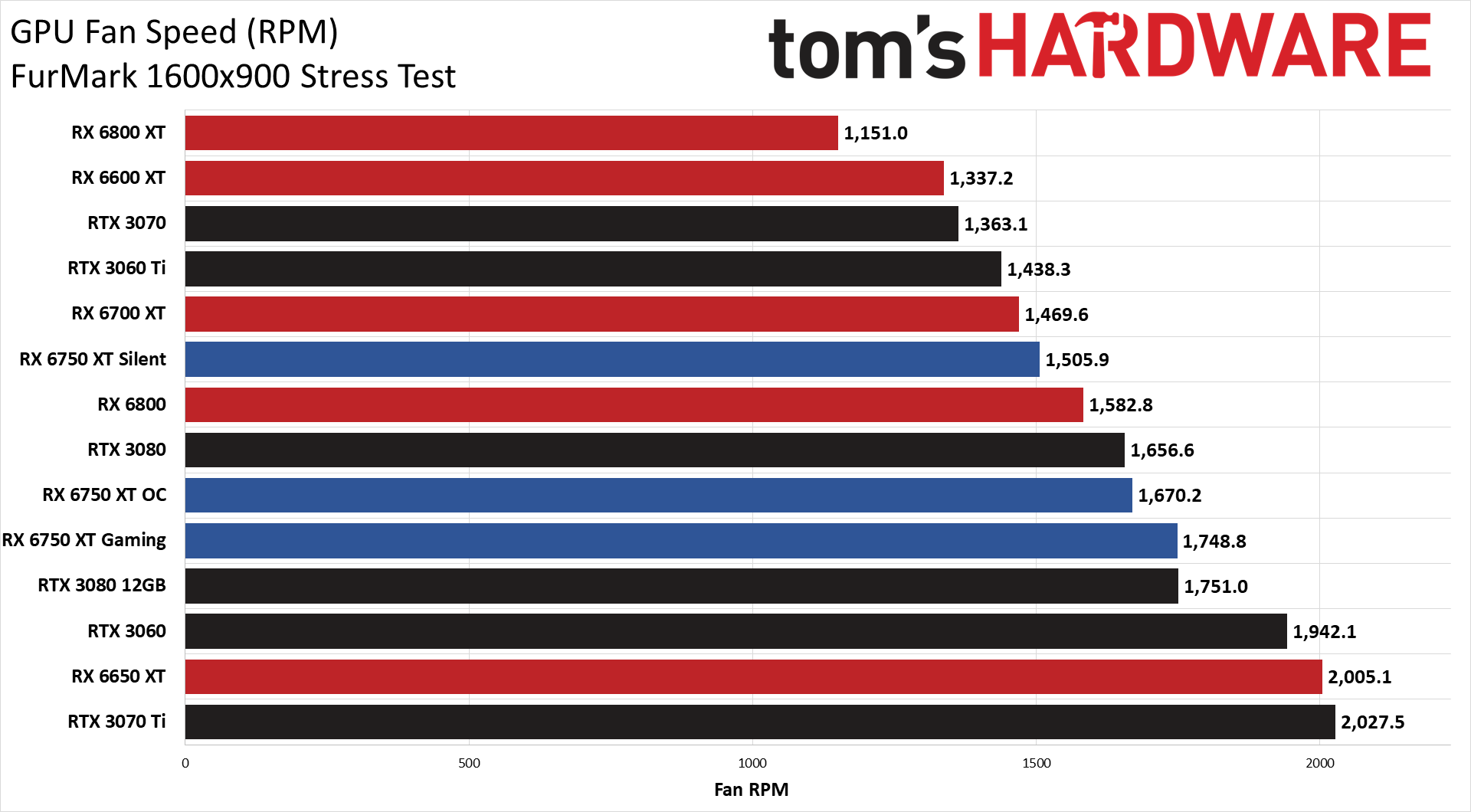
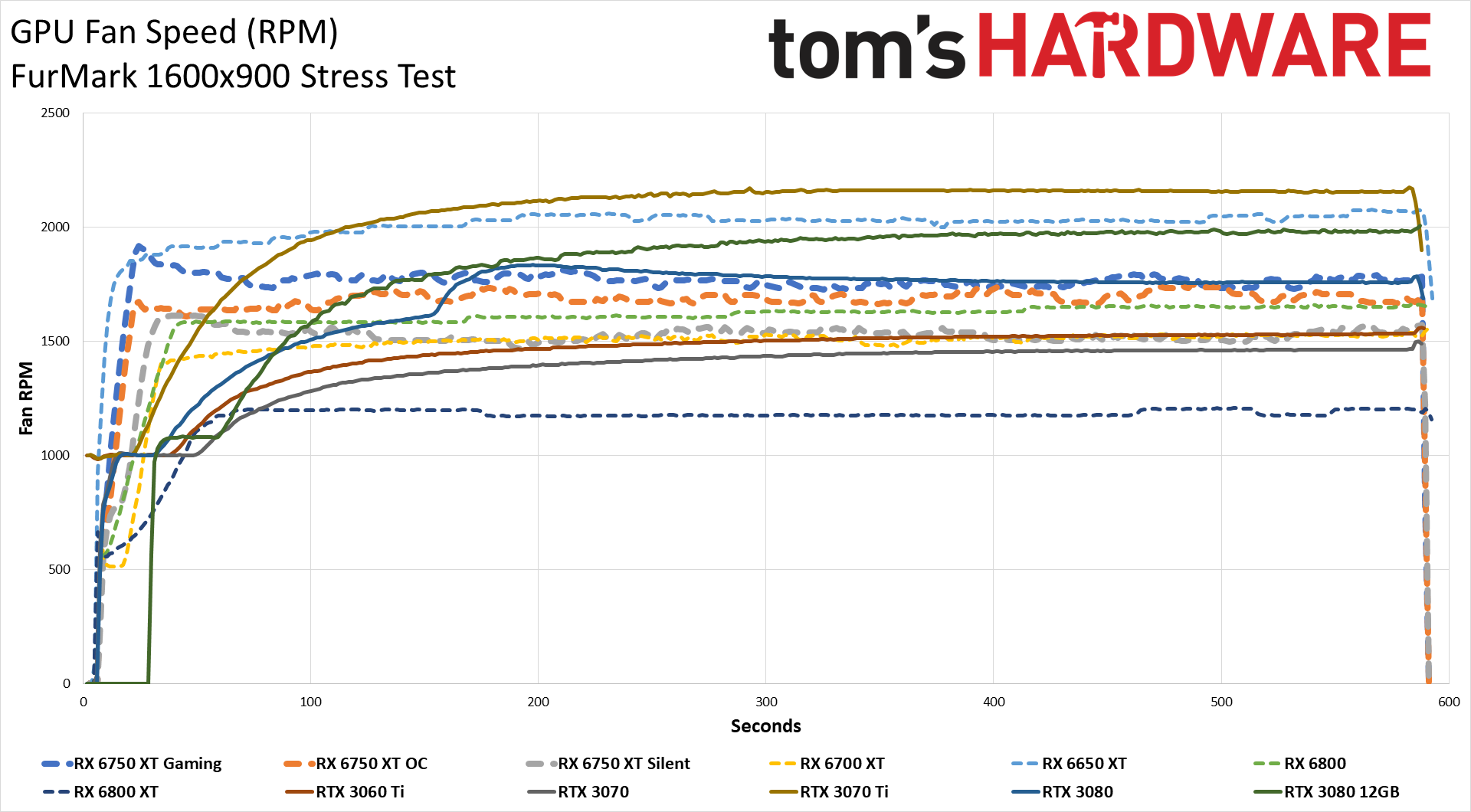
Cooling performance for the Asus Strix 6750 XT was great, with the GPU not going above 60C regardless of the performance profile or workload we threw at it. That's by design, as it's clear from the fan speed charts that the card spins up the fans to keep temperatures in check. For example, silent mode topped out at around 1250 rpm while gaming, whereas the default Gaming mode allowed the fans to reach up to 1600 rpm. However, despite the relatively large jump in fan speed, the actual noise levels were pretty consistent.
We measured noise levels at 10cm using an SPL (sound pressure level) meter. The SPL was aimed right at the middle GPU fan in order to minimize the impact of other fans like those on the CPU cooler and the noise floor of our test environment and equipment measures <33 dB(A).
Using the default settings, the fans reached a maximum of approximately 47% fan speed and generated 44.1 dB(A) of noise. We say "approximately" because the three fans on the Asus card don't need to spin at the same rate, but if all three spin at 47%, we got the same 44 dB we measured while gaming. Silent mode drops the average fan speed down to 42%, with noise levels of 40.0 dB(A), while the OC mode — which, as already noted, didn't seem to be working correctly — ran the fans at 43% and 41.3 dB. We also measured with a static fan speed of 75%, which generated 57.9 dB of noise.
Incidentally, we didn't include all the Asus RX 6700 XT figures in the power charts, but that card was slightly louder than the Asus 6750 XT, hitting 46.5 dB(A) while gaming with a 50% average fan speed. It appears that model may have been tuned for slightly lower temperatures at the cost of increased fan speed and noise.
- MORE: Best Graphics Cards
- MORE: GPU Benchmarks and Hierarchy
- MORE: All Graphics Content
Get Tom's Hardware's best news and in-depth reviews, straight to your inbox.
Current page: Asus Radeon RX 6750 XT: Power, Temps, Noise, Etc.
Prev Page Asus Radeon RX 6750 XT: 4K Gaming Performance Next Page Bottom Line: Asus Radeon RX 6750 XT
Jarred Walton is a senior editor at Tom's Hardware focusing on everything GPU. He has been working as a tech journalist since 2004, writing for AnandTech, Maximum PC, and PC Gamer. From the first S3 Virge '3D decelerators' to today's GPUs, Jarred keeps up with all the latest graphics trends and is the one to ask about game performance.
-
tennis2 My brother has the 3060Ti with this same cooler. It. is. CHONKY. Sooo overkill for this class of card is gloriously hilarious.Reply
They're using the same cooler all the way through their 3090. -
JarredWaltonGPU Reply
Yeah. The annoying thing to me is that Asus doesn't seem to do much with all the cooling headroom. Surely the 6750 XT can clock higher than this without any issue? Efficiency be damned, bump those clocks and voltages and give me 3GHz!tennis2 said:My brother has the 3060Ti with this same cooler. It. is. CHONKY. Sooo overkill for this class of card is gloriously hilarious.
They're using the same cooler all the way through their 3090. -
hotaru.hino Surely staying under 60C with Furmark running on air must amount to something :tonguewink:Reply
Like I get the idea of recycling designs because it means less variations and whatever, but at some point you have to make something different. Lest we see this on a GTX 1630. -
tennis2 Reply
I'd say that falls on the side of "user risk" rather than something Asus would want to cover with a warranty. With this cooler and card, you've certainly got the tools.JarredWaltonGPU said:Surely the 6750 XT can clock higher than this without any issue? Efficiency be damned, bump those clocks and voltages and give me 3GHz! -
tennis2 Reply
The Strix 3050 and 3060 is basically the same cooler, but with 5 heatpipes.hotaru.hino said:Like I get the idea of recycling designs because it means less variations and whatever, but at some point you have to make something different. Lest we see this on a GTX 1630.
Strix 3090 for reference (exact same as the 3060Ti/6700XT on up):
-
Sleepy_Hollowed I mean.... if it's the only thing you can buy, I guess it's nice, but for that price if there's other options, nah.Reply
That is one killer cooling solution though, and I do like they reuse it, though it looks like a tank.
